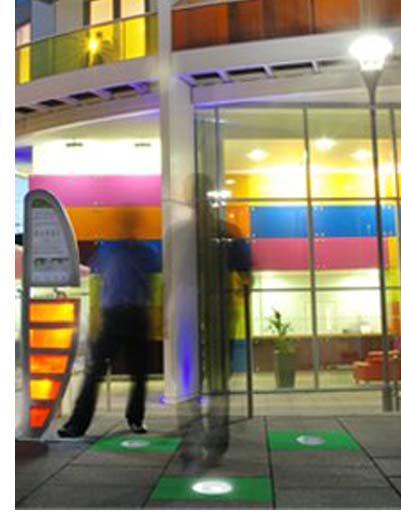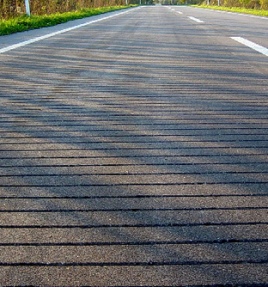
Tweet
A new type of paving stone that generates electricity when it is walked upon will leave pedestrians marginally more weary after a day of Christmas shopping, but promises environmentally-friendly street lighting in return.
Pavegen paving stones work by taking a little of the kinetic energy from a footstep and converting it into renewable electricity for LED streetlights. They are being tested in east London ahead of the 2012 Olympics.
The paving stone is depressed by 5mm each time it is stepped on. Five per cent of the energy produced illuminates the LED ground light embedded in its surface while the remaining 95 per cent is stored in a battery for use by overhead street lighting, bus stops or illuminated advertising boards.
Piezoelectricity
The term piezoelectric relates to the ability of some materials to generate electricity when they are squeezed or pressed.
If the processes used to acquire and install the system is environmentally friendly the piezoelectric crystals provide a green, if limited, supply of power.
A spokesperson for the Environmental Transport Association (ETA) said: “Walking was already the greenest way to travel and now pedestrians can help others see the light.”
| Electric avenue | Power-producing pavements |
|---|---|
| Pavegen pavement |
Electricity from roads
 A prototype road surface unveiled in in Israel three years ago used crystals embedded in the asphalt to turn the vibration caused by cars into electricity. Engineers at the Technion-Israel Institute of Technology claimed the piezoelectric crystals produced up to 400 kilowatts from a 1-kilometre stretch of dual carriageway.
A prototype road surface unveiled in in Israel three years ago used crystals embedded in the asphalt to turn the vibration caused by cars into electricity. Engineers at the Technion-Israel Institute of Technology claimed the piezoelectric crystals produced up to 400 kilowatts from a 1-kilometre stretch of dual carriageway.
0 Comments View now